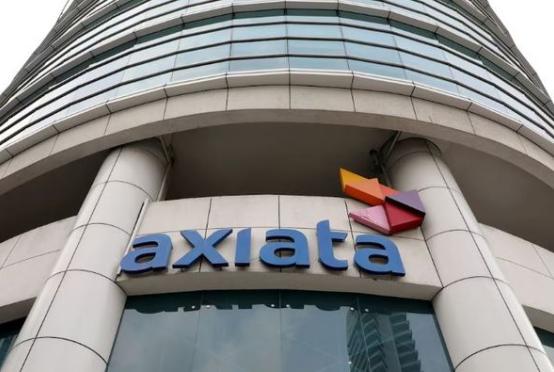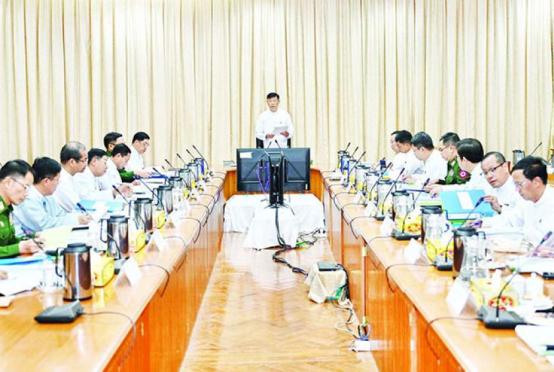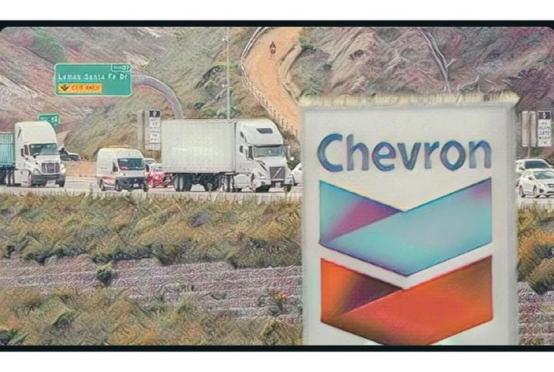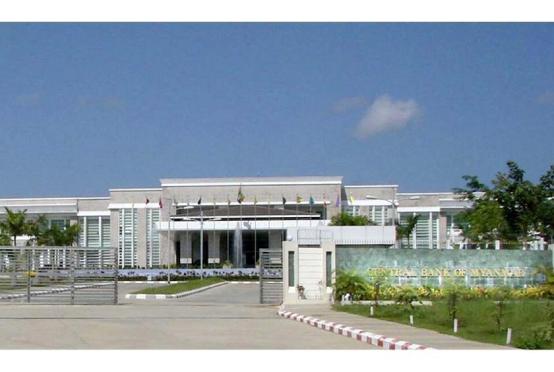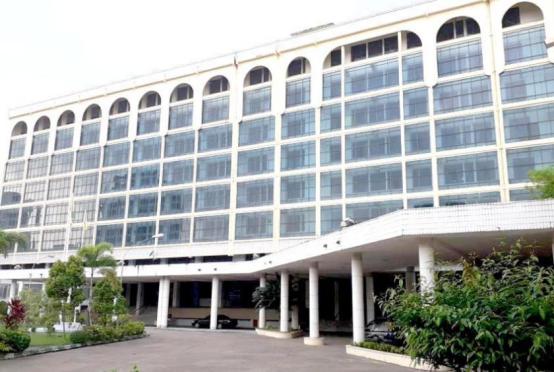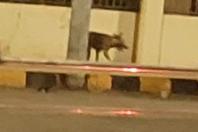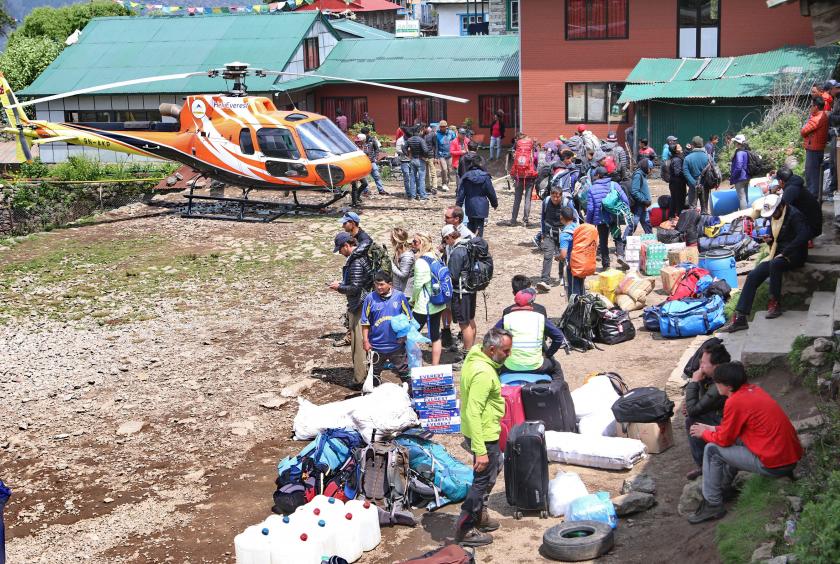
Kathmandu (The Kathmandu Post) - A Post investigation shows Australia-based Traveller Assist used the helicopter rescue scam to market itself as the sole representative of global insurance firms
In a letter to Nepal’s tourism minister last month, the managing director of Traveller Assist, an Australia-based medical assistance company, threatened the government that his clients would stop issuing travel insurance policies in Nepal if the administration does not take action against trekking agencies, helicopter companies and hospitals that have been involved in fraudulent rescues.
“I am writing on behalf of our clients to submit a formal open letter that will serve as Final Notice to the Ministry for Culture, Tourism and Civil Aviation. To be clear, this is an ultimatum!” the letter from Jonathan Bancroft reads.
A similar ultimatum had been issued in August last year, in which Traveller Assist gave the government until September 1 to take action. The government then issued a directive on the day, asking all helicopter companies, travel and tour operators, and hospitals and insurance companies in the country to submit details of rescue flights, medical treatment and insurance bills to the Tourist Search and Rescue Committee, Tourist Police and the Department of Tourism.
But a day before the government’s order, Danny Kaine, the head of assistance at Traveller Assist, sent an email to one of the helicopter charter services, asking the company owner to sign an agreement with his firm.
“We would like you to read, and if you agree, sign and return the attached agreement,” Kaine wrote to Kathmandu-based FCI Heli Charter Service. “It is very important that if you receive a call to provide a heli for any traveller insured by our clients, that you must first inform us.”
While the government’s investigation was in progress (and it still is), Traveller Assist attempted to impose its services on Nepal-based service companies, essentially claiming that it was the sole representative for major global insurance firms.
Several dozen emails obtained by the Post show that Traveller Assist has been threatening government officials to stop issuing travel insurance for all tourists travelling to Nepal if the government does not take action against those involved in the helicopter rescue scam. The Post can also confirm that at least one senior executive at the Australia-based company has sent emails to private sector service providers—including top hospitals in Kathmandu, trekking and rescue agencies, and helicopter companies—asking them to carry all insurance businesses through Traveller Assist, or else they would be blacklisted.
In the emails, Kaine, the head of assistance at Traveller Assist, claims that his firm exclusively represents top global insurance companies—True Traveller, Intana Global Assistance, World Nomads Group, World Nomads (Australia and New Zealand), Travel Insurance Direct, Sure Save Insurance, Cheap Travel Insurance, QBE Insurance, QBE Travel Insurance (Australia and New Zealand), QANTAS Visa Card Insurance, Ouch Travel Insurance, HCF Travel Insurance, Flight Centre Insurance and Smile Insurance—which would blacklist Nepali service providers if they did not go through Traveller Assist.
However, a month-long investigation by the Post shows that Traveller Assist does not represent any of the insurance firms it claims to and has been using the fraudulent rescues probe by the government to market itself as the sole operator for all helicopter rescues and insurance claims. The Post also discovered that Traveller Assist used a fake article under a Post reporter’s byline to tout its services and promote its image in the country.
In a series of WhatsApp conversation with the Post, Kaine, who refused an on-camera interview despite multiple requests, denied that Traveller Assist is trying to get a bigger market share of the rescue insurance and said it simply wants to bring the guilty parties to justice.
“Our investigation has uncovered a multimillion-dollar insurance fraud scam in Nepal,” Kaine wrote. “The government has admitted this is happening. We just want to bring those people and companies to justice so that Nepal is a safer place for travellers and less risky for insurers.”
On July 30 last year, a government fact-finding committee submitted a 700-page report to Rabindra Adhikari, the tourism minister, saying unscrupulous operators had been pocketing thousands of dollars from insurance companies by making multiple claims for a single chopper ride or pushing trekkers to agree to airlifts for minor illnesses. The report followed an explosive story by the Kathmandu bureau of the French news agency Agence France-Presse, on how bogus helicopter rescues were growing in Nepal for insurance payouts. The AFP story was soon followed by a series of reports in national and international media outlets, including the Post.
The government’s investigation committee probed 10 helicopter companies, six hospitals and 36 travel, trekking and rescue agencies following complaints filed by tourism entrepreneurs and recommended that authorities concerned launch further investigation into the companies.
The committee report has recommended the government investigate the transactions of eight agencies: Kailash Charter Rescue, Alpine Rescue, Mountain Heli Charter Service, Eagle Heli Charter Service, Easy Heli Charter Service, Flight Connection Domestic, Mountain Rescue Service and Himalayan Social Journey Trekking—all of which provide chartered helicopter service for trekking and rescue operations.
Four hospitals in Kathmandu—Swacon International Hospital, Era Health Centre, CIWEC Hospital and Vayodha Hospital—and three helicopter companies—Heli Everest, Manang Air and Air Dynasty Heli Services—are also being scrutinised by the government for quoting “exorbitant rates” and making claims against tourist insurance policies.
The government has not made the report public yet but details in the report were leaked to some media outlets in September, including the Post.
The email trail
On July 16 last year, two weeks after the AFP broke the story, Meera Acharya, the director at the Department of Tourism, received an email from Kaine.
“For the past six months, our company has conducted several investigations throughout Nepal, and the overtreatment that is happening in some hospitals, that is costing insurance companies millions of dollars every year,” the email said. “As a company, we have been issued authority by our clients, three major insurance underwriters who insure up to 80 percent of English-speaking visitors to Nepal, to find a solution by the end of 2018, otherwise they will no longer be issuing travel insurance policies, which will have a major effect on the economy of Nepal.”
Acharya had ignored the email as spam, but then she received a second email from Kaine. Only this time, the email threatened to stop issuing travel insurance policies for tourists visiting Nepal from September 1, 2018, if the government failed to take action against brokers from the trekking and mountaineering agencies.
“Since your investigation commenced on May 30, our company has stopped 61 fraudulent helicopter rescues from happening—that’s one rescue every two days.”
Acharya immediately forwarded the emails to the Tourism Ministry, which then responded to Kaine. In his emails, Kaine had introduced himself as an official at Traveller Assist, which acts on behalf of insurance underwriters from the UK, Australia and the US to provide insurance for travellers visiting Nepal.
Kaine also told Nepali officials that Traveller Assist was working with the governments of the UK, Australia, New Zealand, the US and Canada, generating commotion and urgency at the ministry.
A week after the email was forwarded by Acharya, Under-secretary at the Tourism Ministry Pramod Nepal received an email from Kaine in which he said his clients wanted to set up a joint coordination centre so all emergency calls would be handled by Traveller Assist. Each call would be taken by a doctor, nurse or paramedic, all with military experience, and then would dispatch helicopters to evacuate trekkers to approved hospitals.
“All billing will be handled by our company. There will be no chance of fraud,” Kaine wrote. “Because this is what we do already, with the support of the ministry, we could have this operation fully set up and functioning within 45 days.”
To convince the ministry officials, Kaine claimed that in the past nine months, Traveller Assist had prevented over 160 unnecessary helicopter rescues. “With the support of the ministry, issuing a letter to all helicopter companies directing them to use this system, we can drastically reduce the fraud,” Kaine wrote.
Two days later, the Post published a report on the government’s plans to mobilise police for all helicopter rescues from the trekking regions across the country. Following the Post story, Kaine corresponded with the ministry’s under-secretary once again, calling the government’s decision “a big mistake.”
“Insurance is extremely complex,” he wrote. “It’s not just about sending a helicopter from [point] A to B and then collecting the money. My fear is that people’s lives will be placed in jeopardy through unnecessary delays caused by lack of knowledge of the system.”
Pramod Nepal, the ministry official, said he stopped responding to Kaine and forwarded all emails to the investigation committee.
While Kaine was communicating with various officials in the Nepal government, he was also simultaneously corresponding with private helicopter companies, trying to persuade them to sign up for Traveller Assist’s services. During a press conference last month organised by the Helicopter Society of Nepal, an umbrella group of private helicopter companies, ten separate companies said their representatives had received emails from Kaine.
In an email sent on July 15 last year to FCI Heli Charter Service, Kaine claimed that the Nepal government was working with Traveller Assist to establish and finalise the amount all rescue companies can charge tourists, and said it could recommend the ministry to making FCI the preferred network provider.
“We are working with the Ministry of Culture, Tourism and Civil Aviation, and the Ministry of Law, Justice and Parliamentary Affairs on behalf of several major insurance underwriters who issue insurance policies on behalf of 80 percent of travellers to Nepal,” Kaine wrote. “They agreed to work with us to establish a trusted provider network and to bring charges against those found complicit in fraud.”
However, multiple senior officials at the Tourism Ministry told the Post that while they have received emails from Kaine and Traveller Assist, they are not working with the government.
“None of our officials have met Danny [Kaine]. We have never even seen him,” said Ghanshyam Upadhyaya, spokesperson for the ministry.
Officials at the Ministry of Law, Justice and Parliamentary Affairs also told the Post they have never heard of—or from—Kaine or for that matter, anyone from Traveller Assist. “We have nothing to do with the fake rescue and insurance issues,” Binod Kumar Bhattarai, information officer and under-secretary at the Ministry, said.
Kaine, in another email to the charter helicopter company, said that insurance underwriters from the UK, the US, Australia and New Zealand had agreed they would only pay a maximum of $4,000 for helicopter rescues. An email that followed said that the insurance amount would be in effect for “a total of 93 travel insurance brands who insure over 800,000 people who travel to Nepal each year.”
Last year, nearly 1.2 million tourists—including Indians and Chinese—visited Nepal. In 2017, a total of 940,000 tourists traveled to Nepal. Only a fraction of the total visitors—anywhere between 200,000 and 300,000—are required to have travel insurance for trekking and mountaineering activities.
Traveller Assist refused to reveal the full list of insurance brands it represents, but in emails to private service providers in Nepal, it has listed 14 insurance companies as “clients.”
“We have nothing to do with Traveller Assist”
Of the 14 insurance groups claimed as clients by Kaine, 13 companies have denied any ties to Traveller Assist, in separate emails to private service providers and the Post.
In an email response to the Post, World Nomads Group, an insurance company based in Australia, refuted claims made by Kaine in his emails to helicopter rescue companies and hospitals. “None of the brands under the WN Group banner, including WorldNomads.com, currently has any affiliation with Traveller Assist,” said Phil Sylvester, the head of the company’s public relations department.
The Group also confirmed over an email with a private Kathmandu-based hospital—the copy of the email was obtained by the Post, but hospital officials requested anonymity because of the sensitivity of the matter—that not a single brand under the World Nomad Group has modified its assistance protocols for Nepal and do not have an active relationship with Traveller Assist.
“I am unsure why you were instructed otherwise however, [we] believe this may have been an oversight on behalf of Traveller Assist, please accept our apologies for any confusion this may have caused,” Amy Villalobos, the head of international benefits management at the company, told the hospital in an email.
“We have contacted Traveller Assist and requested they contact you directly to provide a correction,” Amy added.
The hospital official who spoke to the Post said neither Kaine nor other officials at Traveller Assist have issued a correction.
Another insurance company, Intana Global, which is based in the UK, wrote an email to FCI Heli Charter Service to inform the Kathmandu-based company that it had no ties with Traveller Assist.
“I can categorically state TA [Traveller Assist] does not represent us nor do we have any agreements with them,” said Gerald Mills, Intana Global Assistance Account Manager, in the email. “Nothing has changed, so anything with our name on it should come to us, not Traveller Assist,” he added.
In correspondence with the Kathmandu-based hospital, Intana Global said Traveller Assist had a temporary agreement with only one of their insurers to handle True Traveller Insurance Policy for a three-month trial period in Nepal. Everything else written by Kaine, the company representative said, was not factual.
“Firstly, Mr Kaine does not represent Intana Global and has absolutely no authority to advise what we would and should be doing,” Mills wrote to the hospital. “We will be the only ones responsible for issuing grantees of payment, not Traveller Assist.” Mills said Intana Global’s sole agent in the country is Nepal Rescue and Medical Assistance.
The same hospital also received a communication from QBE Insurance and QBE Travel Insurance in Australia, both of which said they have not signed an agent-only authority with Kaine but have used his services on an ad hoc basis.
“At this point there is no change to our current arrangement of notifying us directly and we will let you know if we appoint a local agent,” said Sally Wragg, the firm’s service manager, in an email.
When the hospital reached Ouch Travel Insurance, also based in Australia, to confirm if it had signed an agreement with Traveller Assist, as indicated by Kaine in his email, the company’s official said it had no connections with Kaine or Traveller Assist.
In a WhatsApp interview with the Post, Kaine said he had sent a small list of clients from the past but that it was not a complete list. When asked about the response from the insurance companies he had listed in his email to hospitals and helicopter services, Kaine said those companies were not their clients.
“Then they are not our clients,” he said. “We are only acting on behalf of our clients. I can’t comment on insurance companies who are not our clients.”
No offices in Nepal
According to the company’s website, in September 2017, Traveller Assist sent their operations manager Forest Williams to Kathmandu on a three-month joint venture with a major travel insurance company.
“As a company, we and our clients have been so happy with the positive results of this joint venture that we have decided to make it permanent, launching a Traveller Office in Kathmandu,” Bancroft, the group’s managing director, says on the website.
In April last year, Traveller Assist’s official Twitter account posted a tweet saying Bancroft visited the company’s “new Regional Operations Centre” in Kathmandu. A second tweet in the same month said Bancroft was at the Everest Base Camp.
Four months later, Traveller Assist posted another tweet, this time saying its doctors and nurses were providing medical assistance in various countries, including Nepal.
However, during the interview with the Post, Kaine, the head of assistance, said Traveller Assist did not have any offices in Nepal and carries its operations out of its head office in Dublin, Ireland. He said the company does have staff in Kathmandu and use them during the tourist season.
“We have staff who are located there for the busy trekking season, and they are activated as and when required. They coordinate flights. They also visit patients in hospitals, transport patients from hospital to hotel, pick up luggage etc. They are there to assist travellers,” Kaine said.
But according to the Department of Industry, there are no records for any offices for Traveller Assist in Nepal.
Traveller Assist posted a series of tweets last year, claiming to have an operation center in Nepal. The company doesn't have any offices in the country.
Officials at the Kathmandu-based hospital, which is frequently used to treat tourists rescued from the mountains, raised doubts that Traveller Assist had any medical crew in the country. “We have yet to see a single one, even when we asked the company to send his doctor to evaluate a patient that was being treated at our hospital,” the hospital official said.
Then, late last year, Traveller Assist said it had made instant payments to out-of-network hospitals in a number of Latin American countries and Nepal using Payr, a digital payment system.
According to online reports, Traveller Assist launched Payr in October last year, using a combination of fintech, blockchain and industry expertise to facilitate payments of medical bills and travel-related expenses.
On its website, the company claims it has accounts around the world, linked by smart technology, enabling them to hold, pay and receive payments in over 75 countries and facilitate payments in 120 countries, including Nepal.
When Traveller Assist first made headlines in the country last year, service industry entrepreneurs and government officials took it seriously, launching investigations into unnecessary rescue operations that were scamming tourists. However, once the company started putting pressure on the government, essentially issuing ultimatums, officials have been raising concerns about the pattern of aggressive negative campaigning by Traveller Assist.
Rajendra Sapkota, former board member of Nepal Tourism Board and the managing director at Outdoor Himalayan Treks, said that while there are a few companies acting fraudulently and damaging the country’s image to earn quick money, Traveller Assist’s recent portrayal of Nepal could be devastating for the country.
“The government should be responsible for checking and finding remedies for these kinds of fraudulent activities,” he said. “It’s not the duty of Traveller Assist to monitor and control Nepal’s tourism industry.”
Dandu Raj Ghimire, director general at the Department of Tourism, said that after the new directive was implemented last September, helicopter rescues have significantly come down.
“Unnecessary rescues have been controlled to a large extent,” Ghimire said, adding that the government has asked 12 helicopters and rescue agencies and 14 hospitals to submit their rates between September 2018 and January 2019.
A total of 187 rescue operations were carried out during the period, according to Ghimire. Last year, there were 1,561 heli rescues between January and August, many of which took place during the busy Everest climbing season between the months of April and May.
The government, following the completion of its official probe into the fraudulent rescues, has assigned the Central Investigation Bureau to launch an investigation into Traveller Assist, including Danny Kaine.
“Along with the investigation into Traveller Assist, the CIB will speed up the process to punish those involved in insurance scams involving bogus rescues,” Rabindra Adhikari, the tourism minister, told the Post.
A spokesperson for the CIB confirmed to the Post that Kaine is also under investigation and that it was collecting data, including financial records from hospitals and rescue agencies, before concluding its probe.
http://kathmandupost.ekantipur.com/news/2019-02-10/international-medical...

